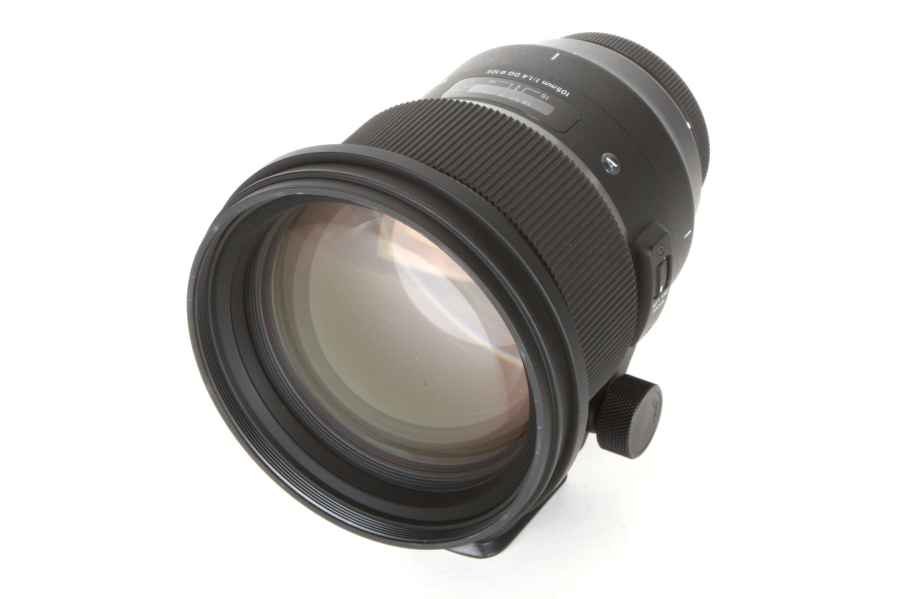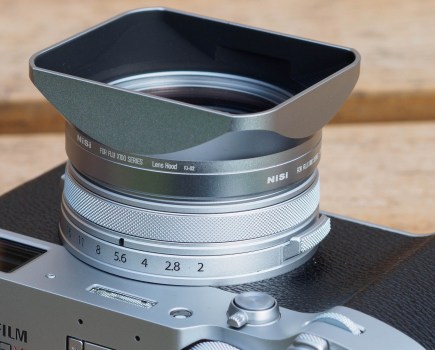Sigma 105mm f/1.4 DG HSM review: Introduction
Since introducing the 35mm f/1.4 DG HSM Art in 2012, Sigma has steadily increased the number of wide-aperture f/1.4 primes in its line-up.
The well-received 50mm f/1.4 DG HSM Art continues to be one of the most popular third-party lenses for full-frame users and after releasing the stupendously sharp 85mm f/1.4 Art DG HSM in 2017, it seemed like it was only a matter of time before Sigma developed an f/1.4 Art-series lens with a longer focal length.
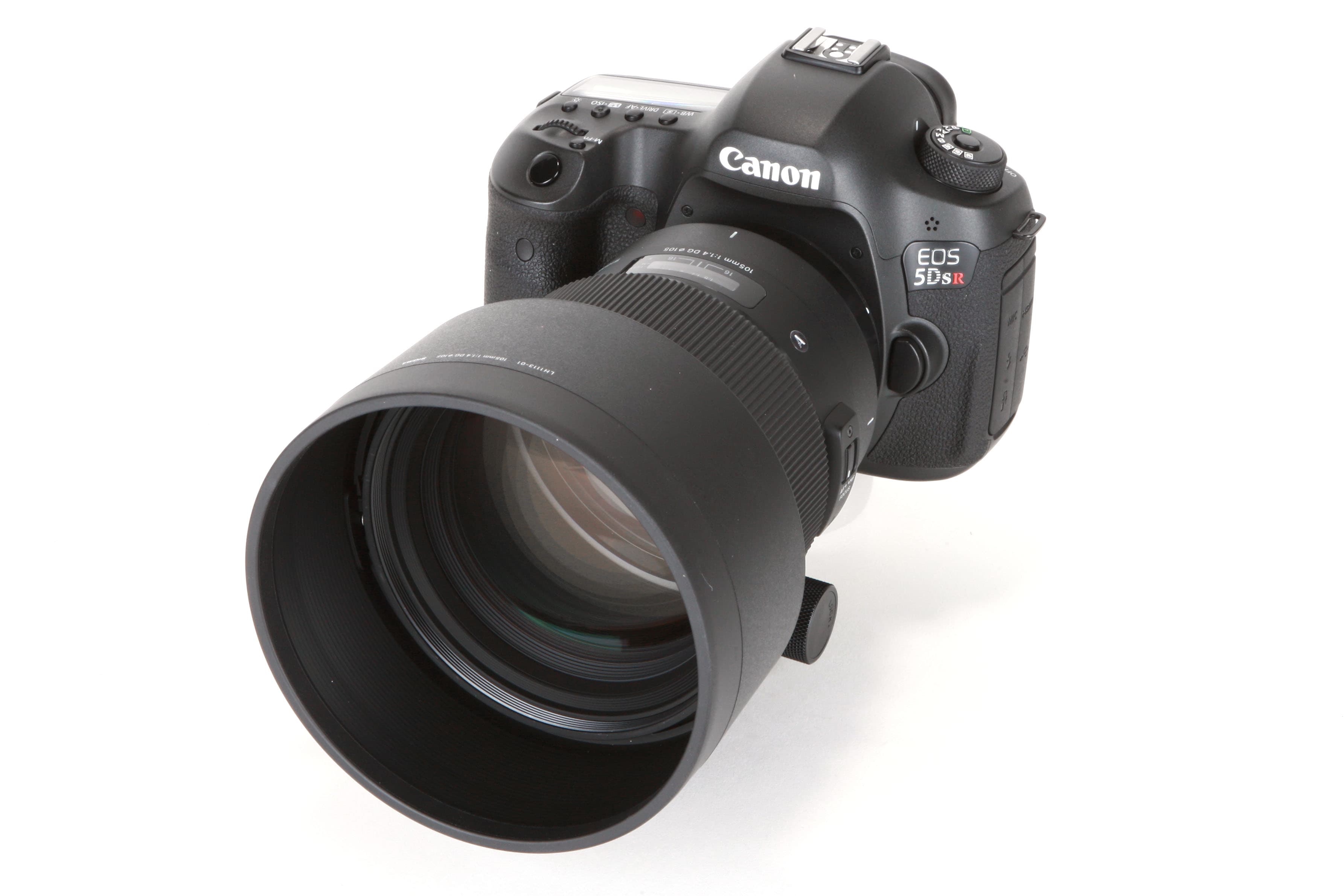
The Sigma 105mm f/1.4 DG HSM was coupled to the Canon EOS 5DS R for testing
The so-called ‘bokeh master’, or 105mm f/1.4 DG HSM Art, as it’s more commonly known, becomes the company’s flagship in the f/1.4 Art line. Not only does it have the longest focal length and largest front element, it’s also the most expensive. It falls into the wide-aperture, mid-telephoto-length category of lenses and has caused quite a stir among portrait and wedding photographers for whom it promises an amazing optical performance and top-notch build quality.
It has competition from the likes of Nikon’s AF-S 105mm f/1.4E ED, but it is £500 cheaper. Canon users who’d like a premium portrait lens that fits the gap between the superb EF 85mm f/1.4L IS USM and the old EF 135mm f/2L USM are likely to be intrigued by it too, plus it is soon to be available in E-mount for Sony’s range of A7-series full-frame mirrorless cameras.
Sigma 105mm f/1.4 DG HSM review: Features
If you think Sigma’s 85mm f/1.4 Art DG HSM is big and heavy, this lens is a monster by comparison. It’s not unusual for Sigma’s Art lenses to be heavier than its rivals, but this optic goes further and then some. Compared to Nikon’s AF-S 105mm f/1.4E ED, which protrudes 106mm from the camera body and weighs 985g, this optic measures 131.5mm in length and weighs a hefty 1.65kg.
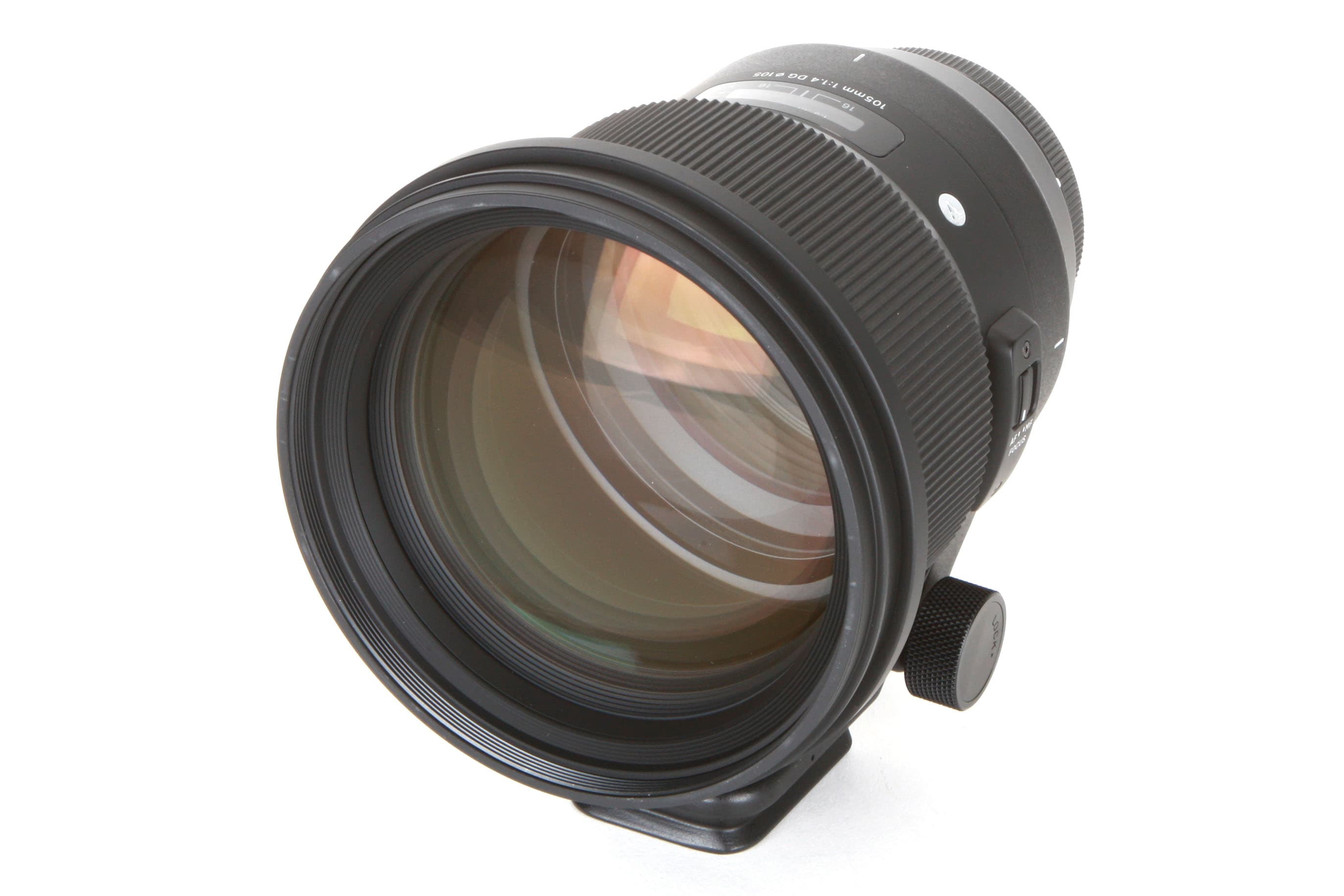
The huge front element accepts screw-in filters and filter adapters of the 105mm variety
Part and parcel of its size and weight comes down to its complex optical design that sees 17 elements arranged in 12 groups – an uncommonly large number of elements for a prime lens. The grouping of three FLD glass elements, two SLD glass elements and one aspherical lens element is claimed to minimise chromatic aberration and deliver the highest resolution possible.
If it performs as well as other Sigma primes I’ve tested in the past with low-dispersion glass, I expect to resolve an excellent level of sharpness that’s undiminished by noticeable fringes of colour along high contrast edges.
In typical Sigma fashion, the lens features the manufacturer’s Super Multi-Layer Coatings to prevent flare and ghosting from causing issues when shooting directly towards the light. It’s also equipped with the company’s Hyper Sonic Motor (HSM), which performs autofocus duties and enables full-time manual focusing – a process whereby users can adjust focus manually at any time without being forced to flick the AF/MF switch to manual first.
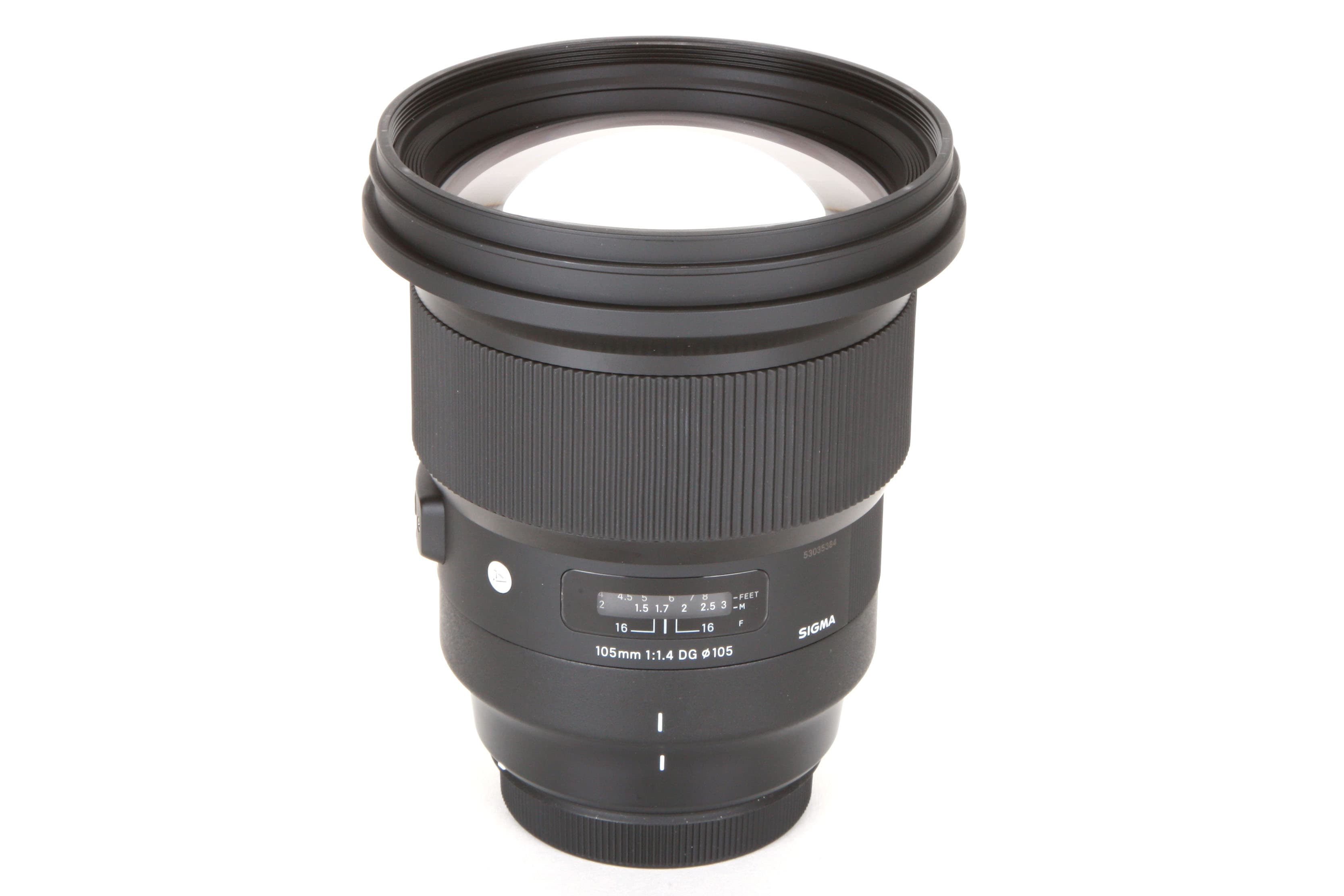
The barrel of the lens gets gradually larger in diameter towards the front
The lens’s nine-bladed aperture diaphragm offers settings from f/1.4 to f/16. Used at its maximum aperture of f/1.4, these nine aperture blades are designed to create a very attractive rendition to out-of-focus backgrounds, with pleasing spherical bokeh in the highlights, hence its nickname the ‘bokeh master’.
Other features include a minimum focusing distance of 100cm and its compatibility with Sigma’s USB docking device that allows users to update lens firmware and perform various types of customisation and adjustment using Sigma’s company’s Optimization Pro software.
The good news for Sony E-mount users interested in this lens is that Sigma’s MC-11 mount converter is no longer required. The E-mount version performs the same exact functions as the converter, including in-camera lens aberration correction. In addition, the lens is compatible with Sony’s continuous AF (AF-C) and Eye AF functions, which were not previously addressed by the MC-11.
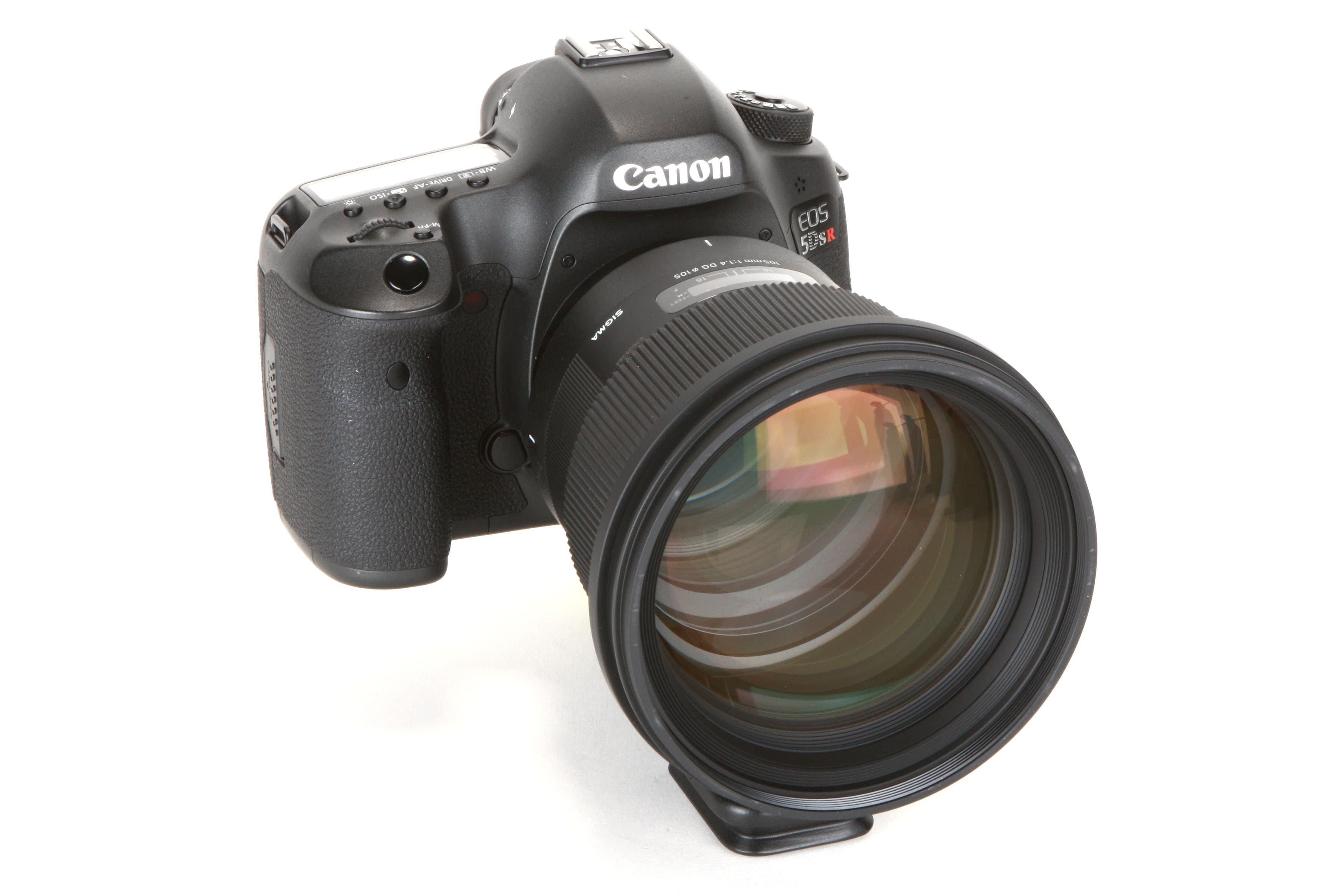
The combined weight of lens and Canon EOS 5DS R comes to just over 2.5kg
As well as the above, the lens is eligible for Sigma’s mount conversion service. The beauty of this is that if you later decide to switch systems, you can convert the lens to make it compatible with your new camera, which is a far cheaper solution to buying the lens again from new.
Sigma 105mm f/1.4 DG HSM review: Build & Handling
Remove the large pinch-style lens cap at the front and you’re presented by a huge front element that has a filter thread size the same as its focal length. Unlike some large lenses that feature a rear filter slot or dedicated slip-in filter holder, this lens has neither. To use this lens with filters you’ll either need to buy a suitably sized adapter ring or purchase screw-in filters of the 105mm variety, which are neither as easy or as cheap to come by as 77mm, 82mm or 86mm examples.
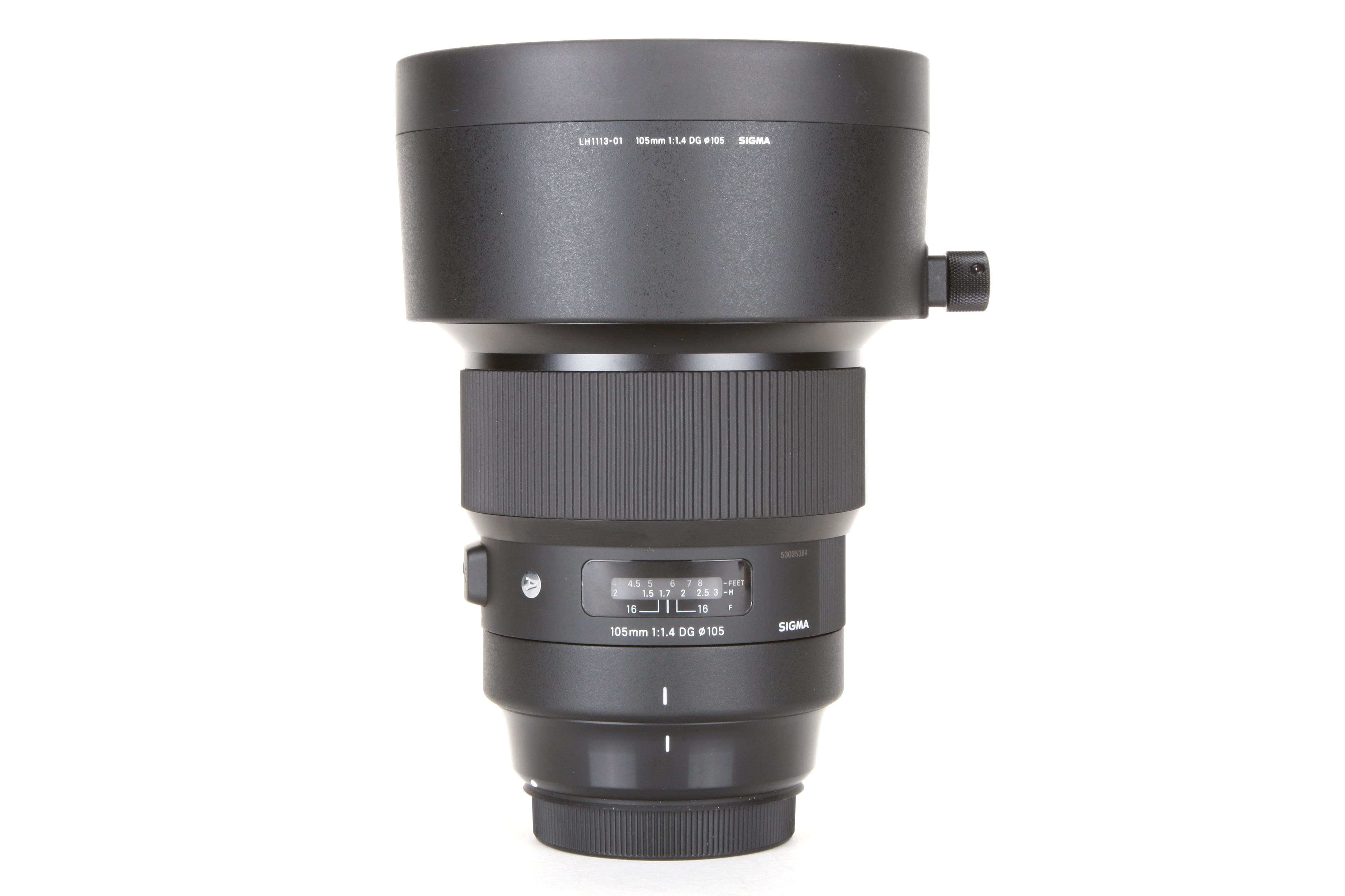
The size of the large carbon fibre reinforced plastic lens hood is clearly shown in this view
In terms of the design, it gradually increases in diameter from the metal lens mount at the rear towards the large manual focus ring at the front. There’s a rubber seal at the mount connection to prevent dust and moisture creeping between camera and lens, and the tripod collar that’s designed to be compatible with Arca-swiss platforms and clamps, can be detached to make it fractionally lighter.
Ahead of the tripod collar there’s a focus distance window and offset to the side of this is the unmistakeable Art badge and AF/MF switch. It’s well placed and easy to locate with your thumb when the tripod collar is inversed and the barrel is resting in your left hand.
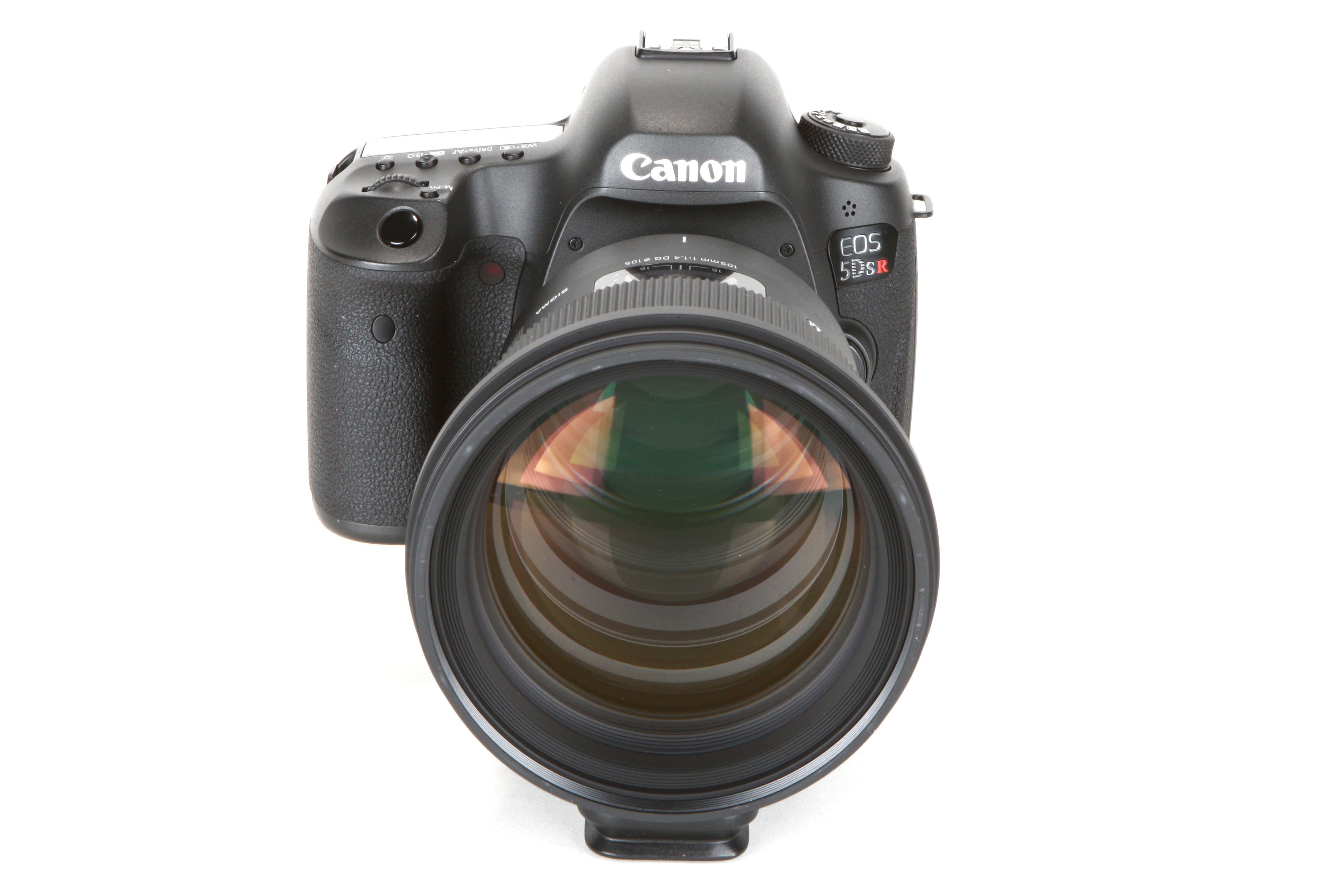
Here we see our Canon-fit review sample coupled with the Canon EOS 5DS R
Though you do notice its heaviness as soon as you pick it up, the fact it’s not as long as many telephoto zooms means it’s not as unwieldy. Pair it up with a full-frame camera with a large-sized grip and you’ll find it handles rather well. Offer support beneath the barrel or at the front of the hood with your left hand and it feels surprisingly well balanced.
The overall build quality is exemplary, just as we’ve come to expect from Sigma lenses that embellish the letter A in a silver circle on the barrel. The manual focus ring is rubberised to ensure you get a good grip of it when it’s wet and offers a satisfying feel when it’s rotated with just the right level of resistance. It functions across its focusing range in just under half a turn.
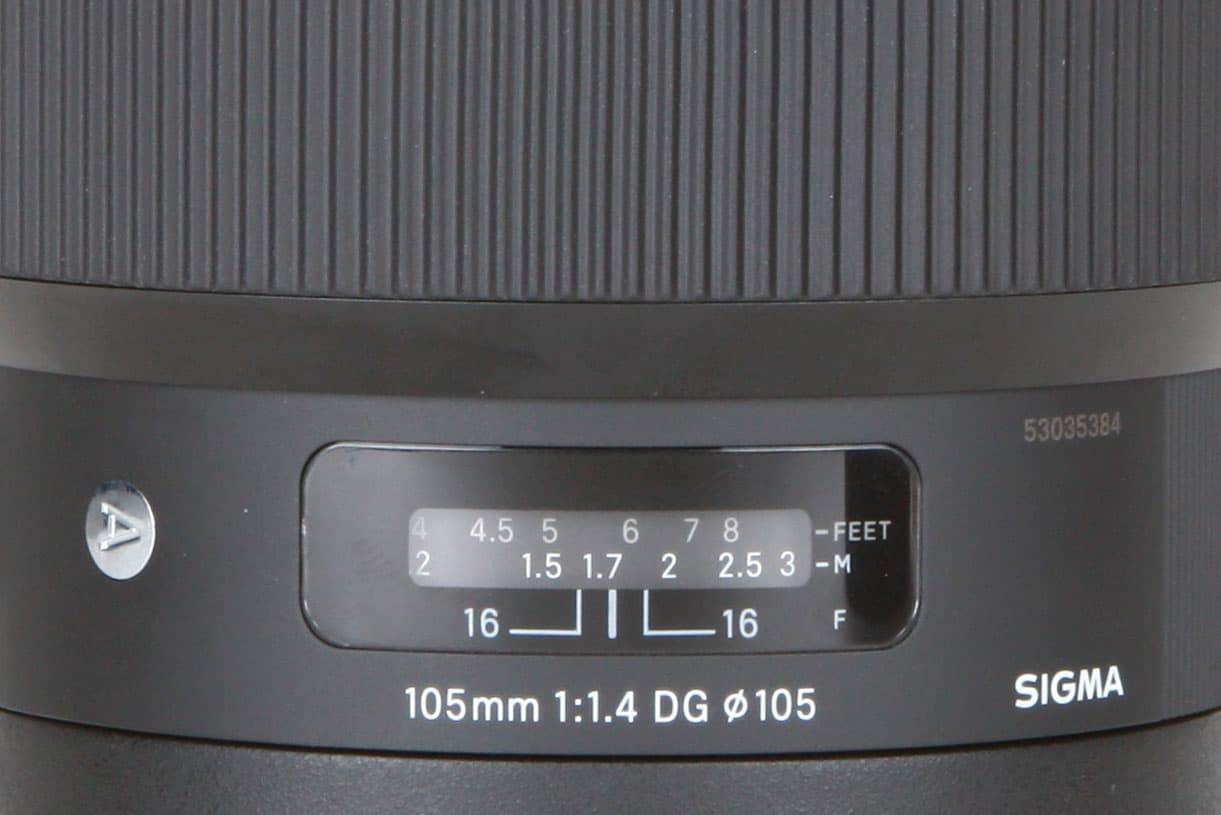
A closeup view of the focus distance window, silver Art badge and rubberised zoom ring
The carbon fibre reinforced plastic lens hood also has a rubberised tip, allowing users to rest the camera nose down on the floor much like a large telephoto zoom. The hood does a great job of protecting the front element from glare, flare and any accidental scratches and can be reversed to make it easier to transport. Just be sure not to misplace it – a replacement will set you back £100.
Sigma 105mm f/1.4 DG HSM review: Image Quality
To get a good impression of what the lens is truly capable of and how it performs in the type of situations it’ll see regular use, it was used on a demanding contre-jour portrait shoot at the coast and at a wedding to capture a series of candid images. In the first instance our Canon-fit review sample was mounted to an EOS 5DS R and for the wedding it was paired up with the EOS 5D Mark III.

Canon EOS 5DS R, 1/2500sec at f/1.4, ISO 100
As to be expected for a fast mid telephoto prime, the fall off in focus occurs incredibly quickly at f/1.4, forcing you to be very precise with your focusing technique in order to resolve pin-sharp focus on a person’s eyes, or your subject.

Canon EOS 5D Mark III, 1/100sec at f/1.4, ISO 800
As the sample images that support this review illustrate, shooting wide open at f/1.4 creates utterly gorgeous background blur that really accentuates subjects and sets them apart from their surroundings. Beautiful circular bokeh is rendered, however using the lens wide open at f/1.4 did produce what’s known as the cat eye bokeh effect, whereby specular highlights are rendered more of an oval shape towards the edge. I discovered that by stopping the lens down to f/2, it created circular bokeh of distant specular highlights right into the corners of the frame.

Canon EOS 5DS R, 1/3200sec at f/1.4, ISO 100
An inspection of our Applied Imaging tests confirmed exactly what I found from studying my sample images at close magnification in Lightroom. A high level of sharpness is resolved in the centre when it’s used at f/1.4, with the sweet spot between centre and edge sharpness being found at f/5.6. Sharpness figures do start to tail off beyond f/11 though as the introduction of diffraction starts to soften fine detail.

Canon EOS 5D Mark III, 1/160sec at f/1.4, ISO 1600
The way vignetting is controlled is a real strength of this lens. Shoot with the lens set to its maximum aperture of the f/1.4 and you’ll be hard pushed to notice that the edges are any darker than the centre in real-world images. Our corner shading tests reveal the corners are approximately 0.3EV darker than the centre at f/1.4, which reduces to less than 0.2EV by f/2.8.

Canon EOS 5DS R, 1/2000sec at f/1.4, ISO 100
As to be expected of a mid telephoto prime costing in excess of four figures, the optical performance isn’t compromised by distortion. I noticed a hint of green and purple fringing in real-world images along high contrast edges in images taken at f/1.4, but this is only really noticeable under very close inspection at high magnification and was easily dealt with using the defringe sliders in Lightroom.
All things considered, the lens does a very commendable job of controlling chromatic aberrations at wide apertures.
Sigma 105mm f/1.4 DG HSM review: Resolution, shading and curvilinear distortion
Resolution
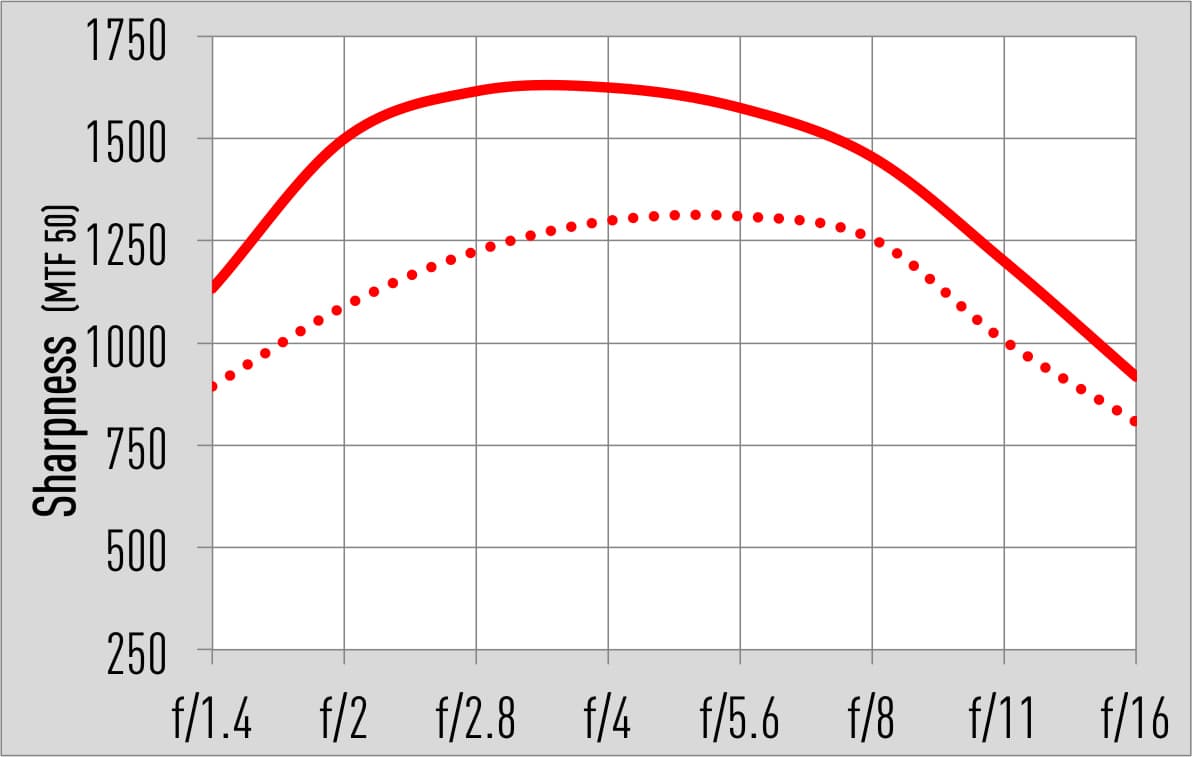
The lens was coupled up to Canon’s 50-million-pixel EOS 5DS R before our Applied Imaging tests were carried out. Like Sigma’s 85mm f/1.4 Art lens, this optic manages to resolve a similar level of sharpness in the centre of the frame at f/1.4 as it does when it’s stopped down to f/11. Sharpness peaks in the centre at f/4 and to find the sweet spot between centre and edge sharpness you’ll want to use an aperture around f/5.6-f/8. The introduction of diffraction plays its part in softening images beyond f/11.
Shading
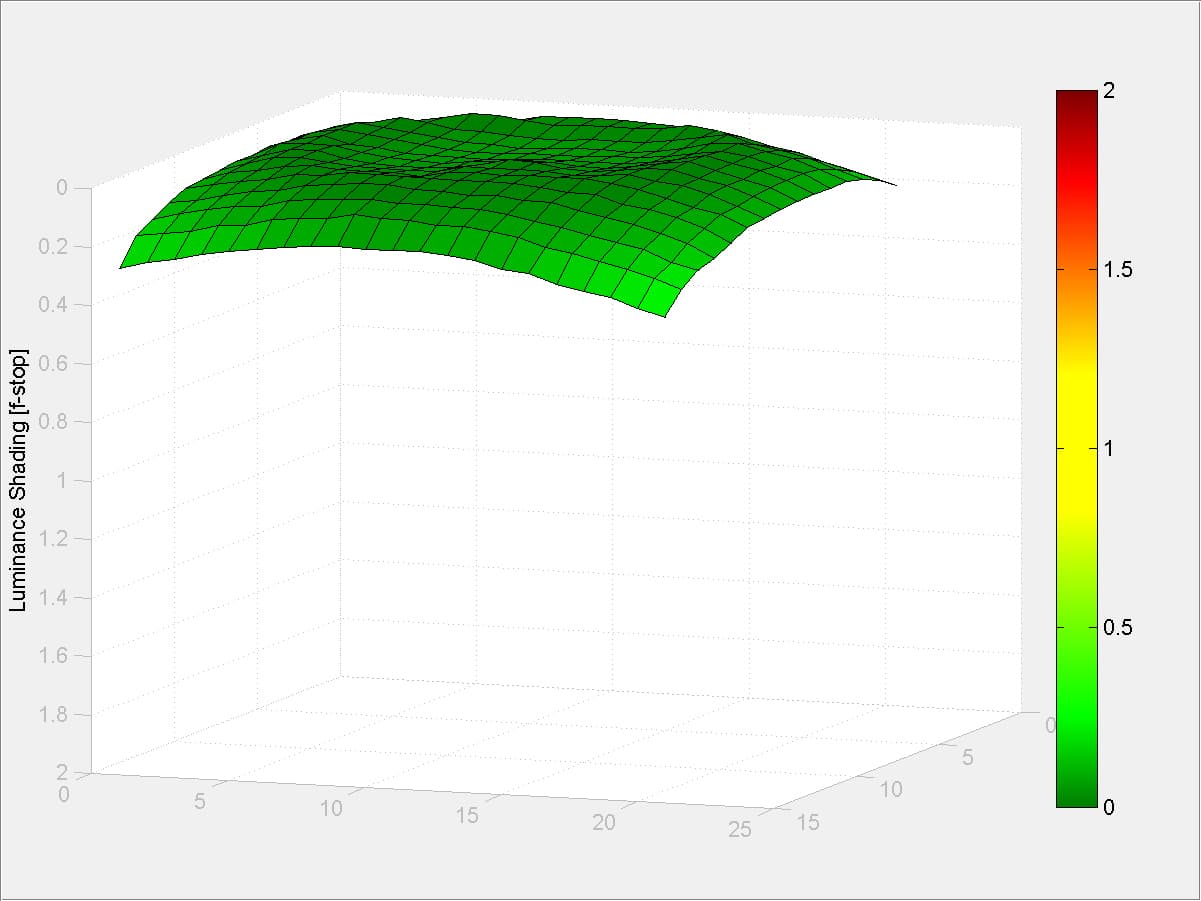
Uncorrected corner shading at f/1.4
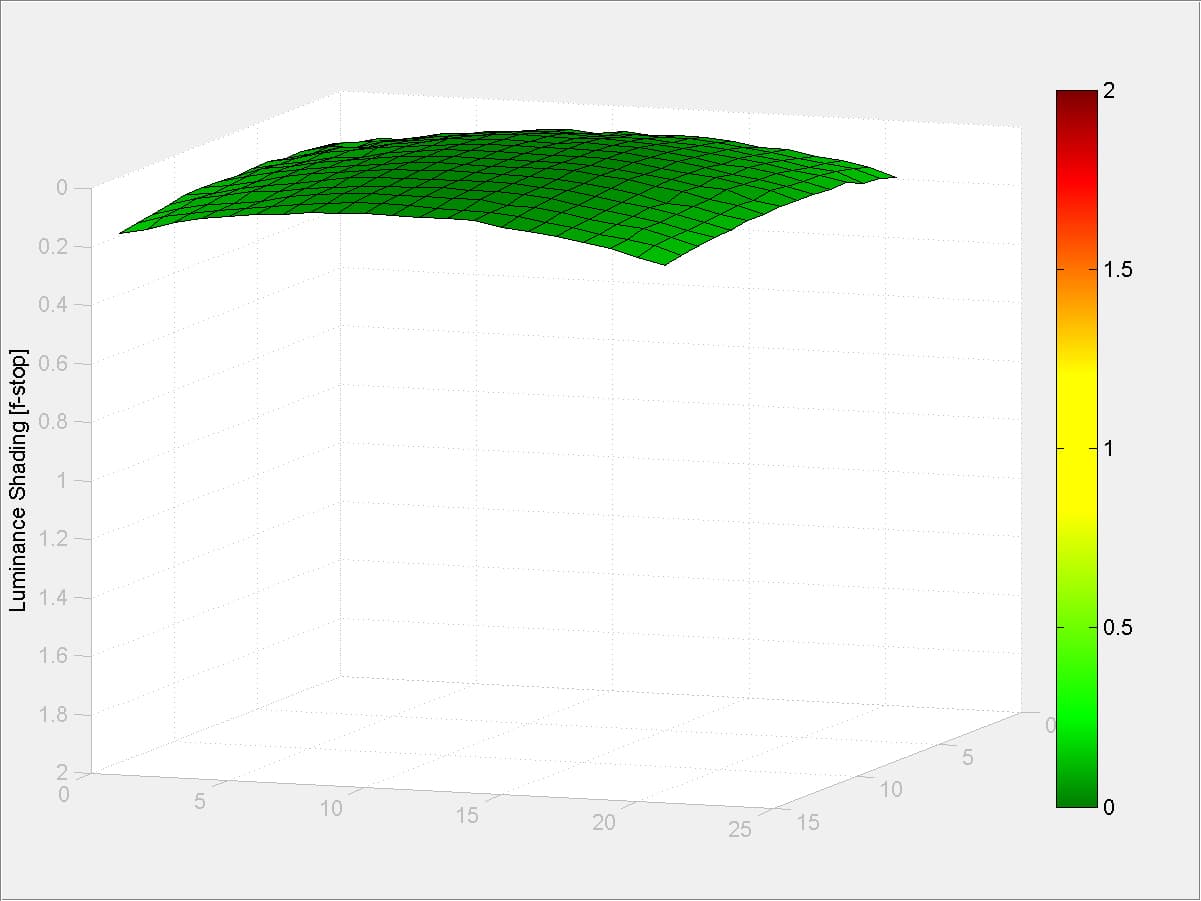
Uncorrected corner shading at f/2.8
With such a large front element, the lens is able to deliver a significantly greater volume of peripheral light than other prime lenses. The result is an extremely impressive vignetting performance, with edges proving to be unnoticeably darker than the centre of the image, even at its maximum aperture of f/1.4. We measured the edge of images to be just 0.3EV darker than the centre of the frame at f/1.4.
Curvilinear Distortion

Uncorrected curvilinear distortion, 0.3% TV SMIA
Curvilinear distortion is rarely an issue on telephoto prime lenses. Users of the lens won’t have any concerns of barrel or pincushion distortion causing any issues and with an extremely low -0.3 distortion figure it sits among some of the best lenses we’ve tested. Our distortion chart above clearly shows that straight lines appear straight to the eye on both horizontal and vertical axis, just as they should.
Sigma 105mm f/1.4 DG HSM review: Verdict
With the 105mm f/1.4 DG HSM, Sigma has created an astonishingly impressive lens that nestles its way into the company’s Art lineup between the 85mm f/1.4 DG HSM and the 135mm f/1.8 DG HSM.
It’ll find its way onto many Canon and Sony full-frame photographers’ wish lists who’ve been yearning for such a lens, and it’ll also attract Nikon users who can make a £500 saving choosing it ahead of the company’s AF-S 105mm f/1.4E ED. While it’s not the most inconspicuous of primes with its thickset barrel and enormous front element, the quality of the bokeh it produces is gorgeous and this is matched by excellent contrast and sharpness right across the frame, even when it’s used at f/1.4. During my testing I became addicted to shooting with it wide-open and, provided that you nail the focus, the results from using it are immensely satisfying and very pleasing on the eye.
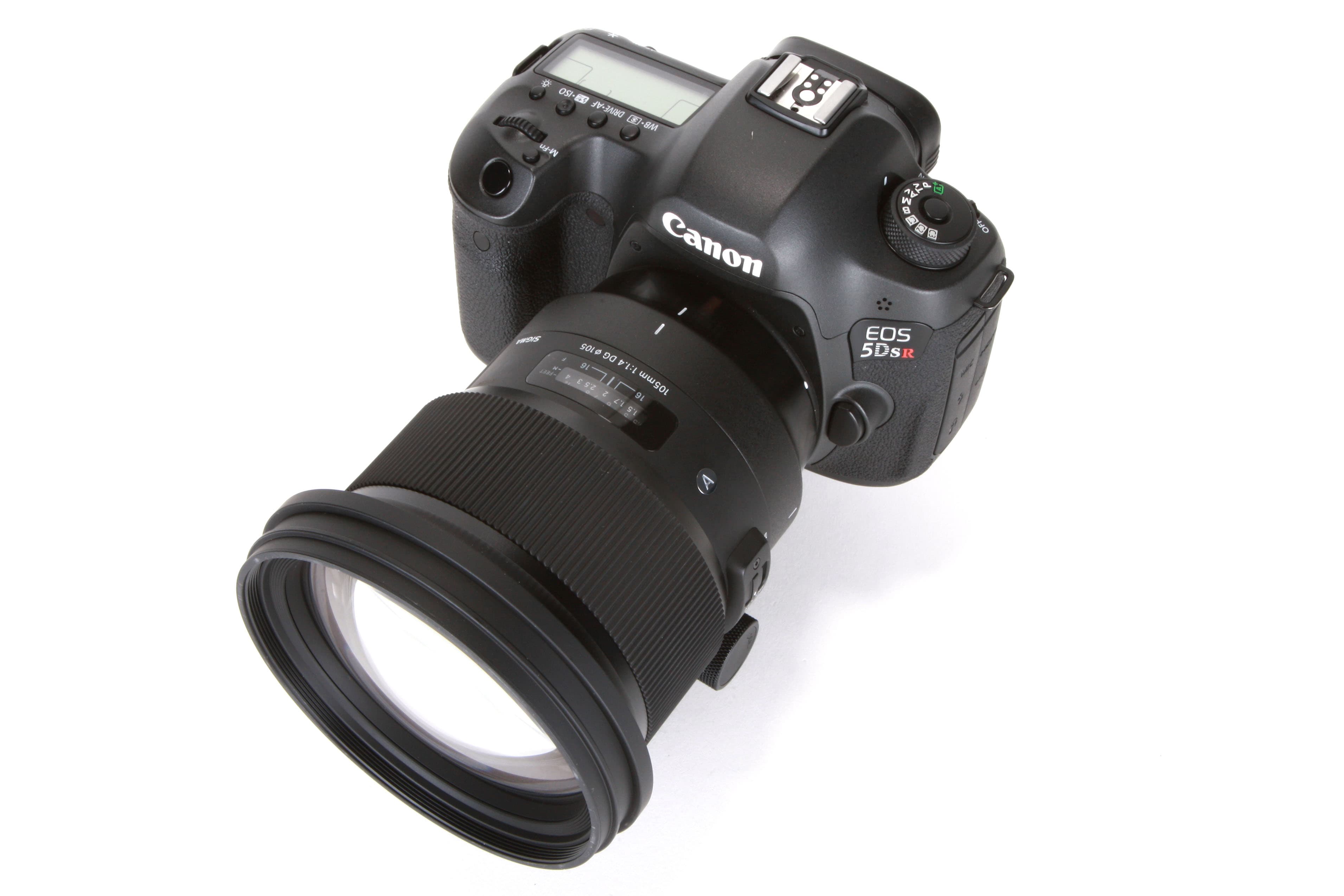
This elevated view gives you a good impression of just how big a prime lens it is
It won’t be the perfect portrait lens for everyone though. The fact it has no optical image stabilisation forces you to keep the shutter speed high to avoid shake, particularly when it’s used with high-resolution full-frame sensor cameras, and the sheer size and weight does take its toll during long periods of handheld shooting. The cost of large and expensive filters is another factor potential purchasers will want to consider too.
While there are smaller, cheaper and lighter primes available, albeit not that many of this focal length and fast f/1.4 aperture, it has to be said that this is one of the finest performing portrait prime lenses we’ve ever tested. It’s every bit as true to being a ‘bokeh master’ as its nickname suggests.

